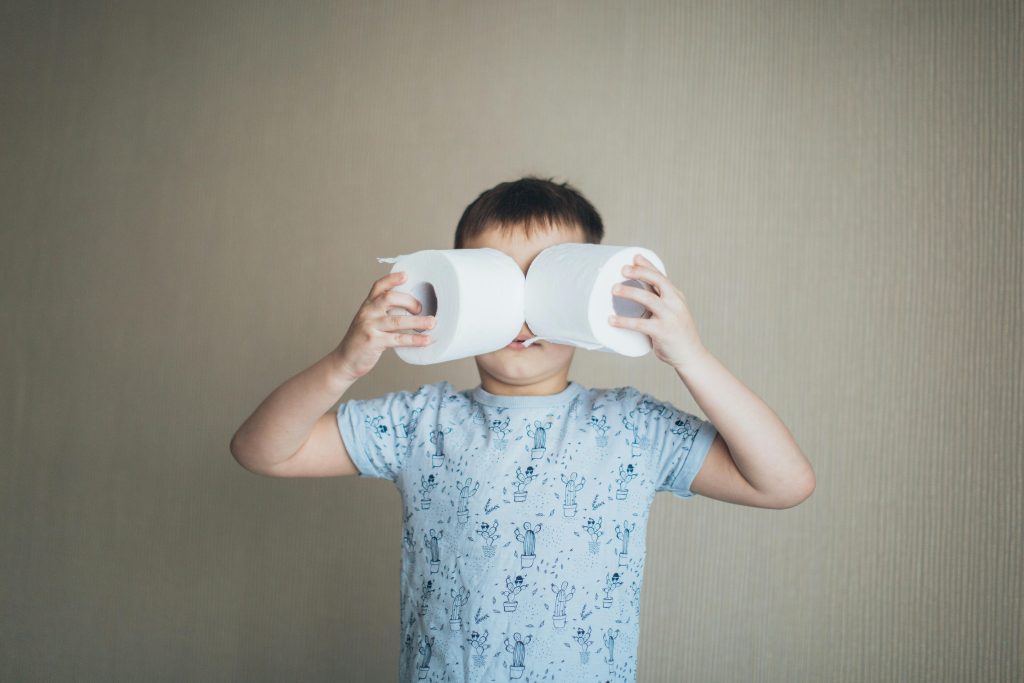
Parent Question:
My five-year-old son is autistic and started school this year. He has a SNA (special needs assistant) and has settled well in school. He is learning and is happy to go, so we are pleased with this. The problem we have is over toileting — he has never once used a potty or a toilet to do a poo but rather puts on a pull-up when he needs to go.
He has good control and never soils himself, but holds everything in so when he gets home he can put on a pull-up and do a poo in it standing up in the bathroom (he does his wees in the normal way in the toilet). If we are out, I take a pull-up with me so he can use other toilets in an emergency — though he prefers to only go to the toilet at home. We have tried to get him to sit on the toilet in the past and to take the pull-ups away but this does not go well.
Now, there could be a meltdown if we try to broach the subject of taking the pull-ups away. It has just become a mental block now. He will sometimes sit on the toilet for me after he has gone and when he is sure nothing will come out. He can’t explain to me what the problem is and why he can’t use the toilet. I know that autistic children can be very rigid and hate changes of routine — this is certainly the case for him. But I don’t know how long this can keep going on for. What would you suggest?
Answer:
Many autistic children have problems with toilet training and there are many different reasons for this. As you say in your question, some autistic children like routines and find changing them hard. If your son has developed a comfort habit going to the toilet in a pull-up, then changing this can invoke anxiety or distress. Also, autistic children can have strong sensory aversions that could make using a toilet seat harder for them. Maybe they feel unstable sitting on a toilet seat, or don’t like the temperature or maybe they have had previous painful toilet experience causing them to be tense.
Understanding what is going on for your son
Your son is unlikely to be able to verbalise what his sensory needs are or why he finds it hard to use a toilet seat. Instead, you have to work this out by closely observing his behaviour and tuning into what might be going on in his mind. He likely derives comfort from having the pull-up on and it has become integral to his ritual of preparing for a bowel movement (BM). The fact that he can sit on the toilet seat when not actually having a BM suggests he might have a fear of seeing his poo come out or might not like the noise of it hitting the water or might fear splashback, etc. Understanding the specifics of his fears will give you an idea as to how to help him.
Make progress gradually
Accept that your son is using pull-ups for the moment and remove the pressure on him to progress quickly. The key is to become relaxed and chilled and to make sure to praise and normalise what he is doing already.
Next, break your son’s toilet training down into small steps thinking what the next small step might be. At the moment your son only feels comfortable enough to let go standing up with a pull-up on in the bathroom. Maybe the next steps might be:
1. Sitting on the toilet with a pull-up on (without an expectation of a BM);
2. Sitting on the toilet with a pull-up on and doing a BM;
3. Sitting on the toilet with the pull-up open and doing a BM;
4. Sitting on the toilet without a pull-up.
The key is to go slowly at your son’s pace and to make the next step really comfortable and relaxed for him. Think about how you can increase your son’s level of comfort. For example, you might let him watch a favourite cartoon on a tablet when he is sitting and/or read a book or sing songs together (without any expectation of doing a BM). You could also have a special game that is only played when he sits on the toilet. For example, you can keep a bottle of bubbles in the bathroom cabinet and take turns blowing bubbles when he sits. Blowing bubbles is a particularly good toilet game as the blowing action will cause him to relax and mimics the letting go action of doing a BM. Making the bathroom a place of fun and relaxation is key to making progress.
Some children respond to visual reward charts and you can see if this helps your son. You write up the steps with pictures and give him a special star for each step. Make sure to reward steps that he does already For example, he might get a small star each time he does a BM in a pull-up and a big star when he sits on the toilet, etc. Wait patiently, until your son is ready to progress between steps.
Do seek further professional help if the problem persists.
John Sharry is founder of the Parents Plus Charity and an adjunct professor at the School of Psychology, University College Dublin. This parenting Q&A was originally published in the Irish Times in October 2023. John writes in the Irish Times Newspaper on Tuesdays. His website is www.solutiontalk.ie.
